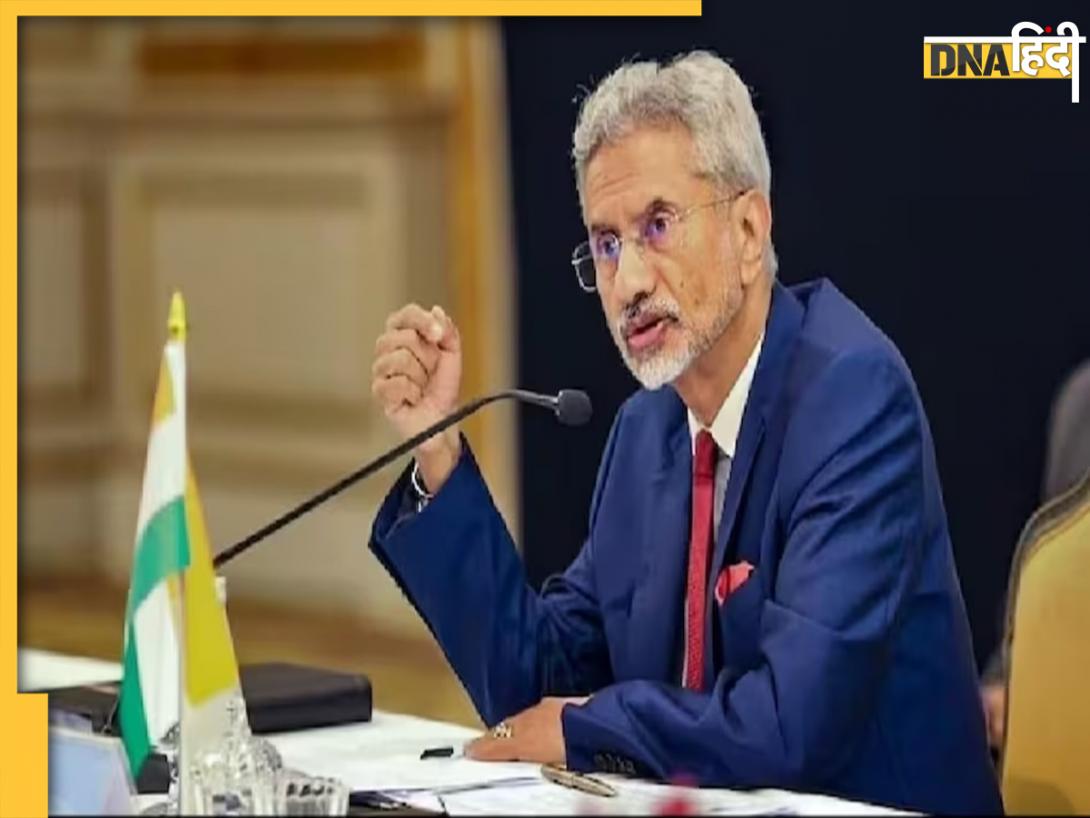India, with its rich tapestry of languages, cultures, and histories, has left an indelible mark on the world. This influence extends far beyond its borders, permeating various aspects of global culture, including language.
From ancient times to the modern era, Indian languages have significantly impacted foreign languages, contributing words, phrases, and even linguistic structures that continue to shape communication across the globe.
Ancient Roots and Global Reach
India’s influence on foreign languages dates back to ancient times when Sanskrit, one of the oldest known languages, played a pivotal role in shaping many languages across Asia. Sanskrit’s rich literary tradition and philosophical texts were translated into various languages, including Tibetan, Chinese, and Japanese, spreading not only Indian thought but also Sanskritic linguistic elements. For instance, many words in Thai, Khmer, and Indonesian languages are derived from Sanskrit, often through the intermediary of Pali, another ancient Indian language.
Words like "raj" (meaning king or ruler),"mantra" (a sacred utterance), and "dharma" (moral duty or law) have traveled across Asia and into Western languages, bringing with them the rich philosophical and cultural connotations of Indian traditions.
The spread of Buddhism from India further facilitated the diffusion of Indian languages. As Buddhist monks traveled to different parts of Asia, they carried with them religious texts and practices, which were often translated into local languages. This led to the incorporation of numerous Sanskrit and Pali terms into the lexicons of these languages, enriching them with new concepts and vocabulary. Terms such as **"karma"** (the principle of cause and effect) and **"nirvana"** (a state of liberation or enlightenment) are now widely recognized and used in many languages worldwide.
Trade and Colonialism: A Linguistic Exchange
India's position as a major center of trade for centuries also contributed to the exchange of linguistic elements. The ancient trade routes between India and the Middle East, Africa, and Europe facilitated the exchange of goods, ideas, and languages. Indian spices, textiles, and other goods came with a lexicon of Indian words that became integrated into foreign languages.
For example:
- "Sugar"is derived from the Sanskrit word "śarkarā."
- "Ginger" comes from the Sanskrit "śṛṅgavera."
- The word "pepper" is believed to have roots in the Sanskrit word "pippali," which traveled through Greek and Latin into English.
The arrival of European colonial powers in India further expanded this linguistic exchange. Portuguese, Dutch, French, and British colonizers not only brought their languages to India but also borrowed extensively from Indian languages.
Some notable examples include:
- "Bungalow" (from Hindi "bangla," meaning a Bengali-style house)
- "Veranda" (from the Portuguese, which took it from the Bengali "baranda")
- "Curry" (from Tamil "kari," meaning a spiced sauce)
- "Pajamas" (from Hindi and Urdu "pājāma," meaning leg clothing)
- "Thug" (from Hindi "thag," meaning a conman or cheat)
- "Loot" (from Hindi "lut," meaning plunder)
- "Juggernaut" (from the Sanskrit "Jagannath," referring to the massive chariot of Lord Jagannath in Puri)
Modern Influence: The Digital Age and Beyond
In the modern era, the influence of Indian languages on foreign tongues continues, particularly through the global Indian diaspora and the rise of India as a technological and cultural powerhouse. Indian cuisine, yoga, Bollywood, and classical music have introduced numerous Hindi, Tamil, Punjabi, and other Indian language words into the global vocabulary.
Terms like:
- "Guru" (teacher or master)
- "Chai" (tea, from Hindi "chāy")
- "Masala" (a mixture of spices)
- "Avatar" (from Sanskrit "avatāra," meaning a divine incarnation)
These words have become part of everyday language in many parts of the world.
The digital revolution has also seen the proliferation of Indian-origin terms and phrases, especially in the field of technology and business. With a significant portion of the global IT workforce hailing from India, technical jargon, slang, and even conversational Hindi and Tamil phrases have made their way into the professional vernacular in multinational corporations.
The Cultural and Linguistic Renaissance
The global fascination with Indian spirituality, cuisine, and art has also revived interest in Indian languages. Yoga, for instance, has introduced Sanskrit terms like "asana," "pranayama," and "chakra" to millions of practitioners worldwide. Similarly, the global popularity of Indian cuisine has brought words like "tandoori," "biryani," and "dal" into the lexicons of countless languages.
Moreover, the translation of Indian literary works into foreign languages has further spread the linguistic richness of India. The works of Rabindranath Tagore, R.K. Narayan, and Arundhati Roy, among others, have been translated into multiple languages, bringing Indian narratives, idioms, and expressions to global audiences.
Conclusion
India's linguistic influence on foreign languages is a testament to the country's rich cultural heritage and its historical role as a crossroads of civilizations. From ancient Sanskrit to modern Hindi, Tamil, and other regional languages, India’s linguistic contributions have left an indelible mark on the world. As globalization continues to bring cultures closer together, the influence of Indian languages is likely to grow, further enriching the global linguistic landscape.
This expanded article illustrates the profound and enduring influence of Indian languages on global communication, showcasing a wide array of Indian-origin words that have enriched languages worldwide.
Refer Indian Institute of Foreign languages to know more about European languages like German, French, Spanish and an Asian language Japanese.
(This article is part of DMCL Consumer Connect Initiative, a paid publication programme. DMCL claims no editorial involvement and assumes no responsibility, liability or claims for any errors or omissions in the content of the article. The DMCL Editorial team is not responsible for this content.)
![submenu-img]() This state to get 3 new Vande Bharat express trains from Sept 15; check route and other details
This state to get 3 new Vande Bharat express trains from Sept 15; check route and other details![submenu-img]() Jacqueliene Fernandez resumes work with month-long shoot for Housefull 5 in London
Jacqueliene Fernandez resumes work with month-long shoot for Housefull 5 in London![submenu-img]() Kolkata rape-murder case: Doctors say protest to continue as CM Mamata Banerjee invites them for talks
Kolkata rape-murder case: Doctors say protest to continue as CM Mamata Banerjee invites them for talks![submenu-img]() Ananya Panday, Vihaan Samrat feared trolling in recreating Siddharth-Kiara's wedding on Call me Bae: 'We were all...'
Ananya Panday, Vihaan Samrat feared trolling in recreating Siddharth-Kiara's wedding on Call me Bae: 'We were all...'![submenu-img]() 'It’s an unfortunate...': Zeenat Aman says most designer outfits are 'unwearable'
'It’s an unfortunate...': Zeenat Aman says most designer outfits are 'unwearable'![submenu-img]() 'जिस अधिकारी को हटाने की हो रही मांग, उसी का आया मेल', डॉक्टरों ने ठुकराया CM ममता का प्रस्ताव
'जिस अधिकारी को हटाने की हो रही मांग, उसी का आया मेल', डॉक्टरों ने ठुकराया CM ममता का प्रस्ताव![submenu-img]() PM Modi और CM Yogi का ग्रेटर नोएडा दौरा, Traffic Advisory जारी, जान लें अपने रूट का हाल
PM Modi और CM Yogi का ग्रेटर नोएडा दौरा, Traffic Advisory जारी, जान लें अपने रूट का हाल![submenu-img]() Russia Ukraine War पर बोले विदेश मंत्री एस. जयशंकर, 'भारत मदद के लिए तैयार, लेकिन बातचीत शुरू हो'
Russia Ukraine War पर बोले विदेश मंत्री एस. जयशंकर, 'भारत मदद के लिए तैयार, लेकिन बातचीत शुरू हो'![submenu-img]() Chhattisgarh News: बल्ब जलाने को लेकर हुआ झगड़ा, पत्नी ने डंडे से पीटकर पति को मौत के घाट उतारा
Chhattisgarh News: बल्ब जलाने को लेकर हुआ झगड़ा, पत्नी ने डंडे से पीटकर पति को मौत के घाट उतारा ![submenu-img]() Manipur Violence: मणिपुर में स्थिति बिगड़ी, RAF को बुलाया गया, 15 सितंबर तक के लिए इंटरनेट बंद
Manipur Violence: मणिपुर में स्थिति बिगड़ी, RAF को बुलाया गया, 15 सितंबर तक के लिए इंटरनेट बंद![submenu-img]() Auto giant gifts Olympic medallist Manu Bhaker this car, it costs Rs...
Auto giant gifts Olympic medallist Manu Bhaker this car, it costs Rs...![submenu-img]() Union Minister Nitin Gadkari says this big carmaker ignored his advice on EVs, 'now they've…'
Union Minister Nitin Gadkari says this big carmaker ignored his advice on EVs, 'now they've…'![submenu-img]() Tata Safari, rival to Hyundai Alcazar Facelift gets massive discount, save up to Rs…
Tata Safari, rival to Hyundai Alcazar Facelift gets massive discount, save up to Rs…![submenu-img]() Hyundai Alcazar facelift launched in India: Check price, design and other features
Hyundai Alcazar facelift launched in India: Check price, design and other features![submenu-img]() Jawa 42 FJ vs Royal Enfield Classic 350: Price, engine, specs compared
Jawa 42 FJ vs Royal Enfield Classic 350: Price, engine, specs compared ![submenu-img]() Meet man, who cracked UPSC twice, has 20 degrees, resigned as IAS officer due to...
Meet man, who cracked UPSC twice, has 20 degrees, resigned as IAS officer due to...![submenu-img]() Meet woman, daughter of widow labourer who cleared UPSC twice, became IPS at 21, IAS at 22, she is famous as India’s...
Meet woman, daughter of widow labourer who cleared UPSC twice, became IPS at 21, IAS at 22, she is famous as India’s...![submenu-img]() Meet Indian genius, son of IIT-JEE topper, who won gold at world’s toughest...
Meet Indian genius, son of IIT-JEE topper, who won gold at world’s toughest...![submenu-img]() AIAPGET 2024: Counselling registration starts today, check details here
AIAPGET 2024: Counselling registration starts today, check details here![submenu-img]() Meet woman who topped class 10, 12, CLAT, law school, cleared UPSC in 1st try, got AIR 60 with self-study, now posted...
Meet woman who topped class 10, 12, CLAT, law school, cleared UPSC in 1st try, got AIR 60 with self-study, now posted...![submenu-img]() Manipur Violence: Curfew Imposed In Three Manipur Districts Amid Drone, Rocket Attacks By Insurgents
Manipur Violence: Curfew Imposed In Three Manipur Districts Amid Drone, Rocket Attacks By Insurgents![submenu-img]() Kolkata Doctor Case: Victim's Mother Blasts CM Mamata Banerjee's 'Insensitive' Durga Puja call
Kolkata Doctor Case: Victim's Mother Blasts CM Mamata Banerjee's 'Insensitive' Durga Puja call![submenu-img]() Apple Watch Series 10 Launch: Key Highlights & Specs | All-New Apple Watch Unveiled
Apple Watch Series 10 Launch: Key Highlights & Specs | All-New Apple Watch Unveiled![submenu-img]() Ukraine-Russia War: Airports Shut, One Dead As Ukraine Launches Massive Drone Attack On Moscow
Ukraine-Russia War: Airports Shut, One Dead As Ukraine Launches Massive Drone Attack On Moscow![submenu-img]() Kolkata Doctor Case: 'CM Wanted To Strangle The Protest', Victim’s Mother Rejects CM Mamata's Claim
Kolkata Doctor Case: 'CM Wanted To Strangle The Protest', Victim’s Mother Rejects CM Mamata's Claim![submenu-img]() RBI slaps Rs 10000000 penalty on India's largest bank for...
RBI slaps Rs 10000000 penalty on India's largest bank for...![submenu-img]() Mukesh Ambani's Reliance ties up with Israeli company to launch....
Mukesh Ambani's Reliance ties up with Israeli company to launch....![submenu-img]() Auto giant gifts Olympic medallist Manu Bhaker this car, it costs Rs...
Auto giant gifts Olympic medallist Manu Bhaker this car, it costs Rs...![submenu-img]() Meet woman, daughter of an Indian billionaire, she leads Rs 20335 crore company, Mukesh Ambani is her…
Meet woman, daughter of an Indian billionaire, she leads Rs 20335 crore company, Mukesh Ambani is her…![submenu-img]() Meet man, who worked at Mukesh Ambani's company for 5 yrs, resigned to launch Rs 1091 crore...
Meet man, who worked at Mukesh Ambani's company for 5 yrs, resigned to launch Rs 1091 crore...![submenu-img]() This actor proposed to Hema Malini for marriage, got rejected, remained single, predicted his own death; then died at...
This actor proposed to Hema Malini for marriage, got rejected, remained single, predicted his own death; then died at...![submenu-img]() Meet Salman Khan’s ‘sister’, who became star at 10, left Bollywood after giving Rs 400-crore hit, now earns through…
Meet Salman Khan’s ‘sister’, who became star at 10, left Bollywood after giving Rs 400-crore hit, now earns through…![submenu-img]() Rs 4000 crore palace, 8 jets, 700 cars: All about Abu Dhabi royal family
Rs 4000 crore palace, 8 jets, 700 cars: All about Abu Dhabi royal family![submenu-img]() Mukesh Ambani's fitness secret: From morning yoga to simple lunch, here are all details
Mukesh Ambani's fitness secret: From morning yoga to simple lunch, here are all details![submenu-img]() Top Tata Motors cars to buy in India
Top Tata Motors cars to buy in India![submenu-img]() This state to get 3 new Vande Bharat express trains from Sept 15; check route and other details
This state to get 3 new Vande Bharat express trains from Sept 15; check route and other details![submenu-img]() Kolkata rape-murder case: Doctors say protest to continue as CM Mamata Banerjee invites them for talks
Kolkata rape-murder case: Doctors say protest to continue as CM Mamata Banerjee invites them for talks![submenu-img]() Weather Update: IMD predicts extremely heavy rain in this state, light to moderate rain in these states; check forecast
Weather Update: IMD predicts extremely heavy rain in this state, light to moderate rain in these states; check forecast![submenu-img]() J&K terror funding case: Baramulla MP Engineer Rashid gets bail till October 2 due to…
J&K terror funding case: Baramulla MP Engineer Rashid gets bail till October 2 due to…![submenu-img]() RG Kar ex-principal Sandip Ghosh sent to 14-day judicial custody till...
RG Kar ex-principal Sandip Ghosh sent to 14-day judicial custody till...











































)
)
)
)
)
)
)
)
)
)
)
)
)
)
)





)
)
)
)
)
)